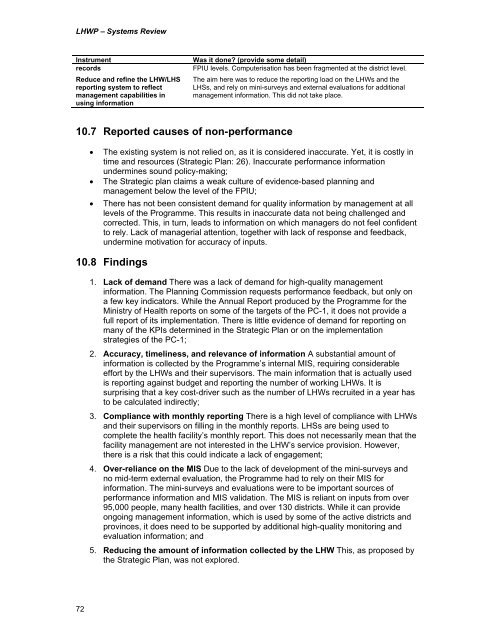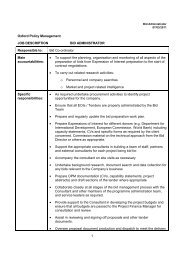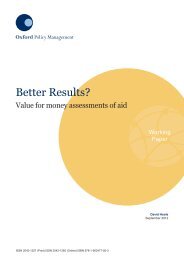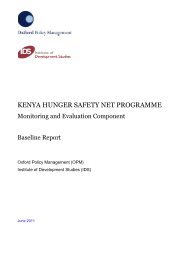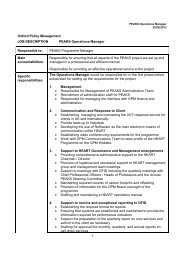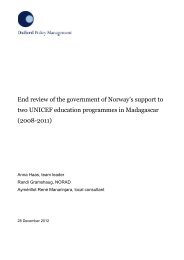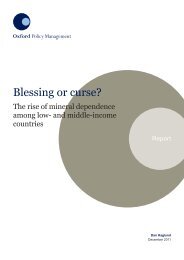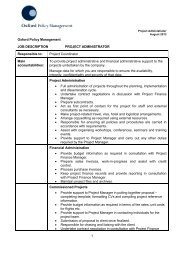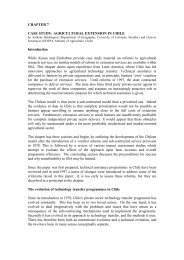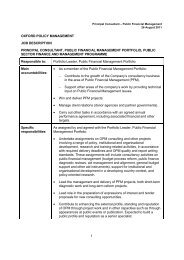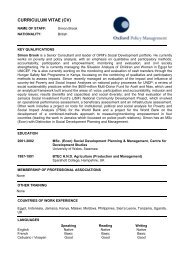LHW Systems Review - Oxford Policy Management
LHW Systems Review - Oxford Policy Management
LHW Systems Review - Oxford Policy Management
You also want an ePaper? Increase the reach of your titles
YUMPU automatically turns print PDFs into web optimized ePapers that Google loves.
<strong>LHW</strong>P – <strong>Systems</strong> <strong>Review</strong>InstrumentrecordsReduce and refine the <strong>LHW</strong>/LHSreporting system to reflectmanagement capabilities inusing informationWas it done? (provide some detail)FPIU levels. Computerisation has been fragmented at the district level.The aim here was to reduce the reporting load on the <strong>LHW</strong>s and theLHSs, and rely on mini-surveys and external evaluations for additionalmanagement information. This did not take place.10.7 Reported causes of non-performance• The existing system is not relied on, as it is considered inaccurate. Yet, it is costly intime and resources (Strategic Plan: 26). Inaccurate performance informationundermines sound policy-making;• The Strategic plan claims a weak culture of evidence-based planning andmanagement below the level of the FPIU;• There has not been consistent demand for quality information by management at alllevels of the Programme. This results in inaccurate data not being challenged andcorrected. This, in turn, leads to information on which managers do not feel confidentto rely. Lack of managerial attention, together with lack of response and feedback,undermine motivation for accuracy of inputs.10.8 Findings1. Lack of demand There was a lack of demand for high-quality managementinformation. The Planning Commission requests performance feedback, but only ona few key indicators. While the Annual Report produced by the Programme for theMinistry of Health reports on some of the targets of the PC-1, it does not provide afull report of its implementation. There is little evidence of demand for reporting onmany of the KPIs determined in the Strategic Plan or on the implementationstrategies of the PC-1;2. Accuracy, timeliness, and relevance of information A substantial amount ofinformation is collected by the Programme’s internal MIS, requiring considerableeffort by the <strong>LHW</strong>s and their supervisors. The main information that is actually usedis reporting against budget and reporting the number of working <strong>LHW</strong>s. It issurprising that a key cost-driver such as the number of <strong>LHW</strong>s recruited in a year hasto be calculated indirectly;3. Compliance with monthly reporting There is a high level of compliance with <strong>LHW</strong>sand their supervisors on filling in the monthly reports. LHSs are being used tocomplete the health facility’s monthly report. This does not necessarily mean that thefacility management are not interested in the <strong>LHW</strong>’s service provision. However,there is a risk that this could indicate a lack of engagement;4. Over-reliance on the MIS Due to the lack of development of the mini-surveys andno mid-term external evaluation, the Programme had to rely on their MIS forinformation. The mini-surveys and evaluations were to be important sources ofperformance information and MIS validation. The MIS is reliant on inputs from over95,000 people, many health facilities, and over 130 districts. While it can provideongoing management information, which is used by some of the active districts andprovinces, it does need to be supported by additional high-quality monitoring andevaluation information; and5. Reducing the amount of information collected by the <strong>LHW</strong> This, as proposed bythe Strategic Plan, was not explored.72


